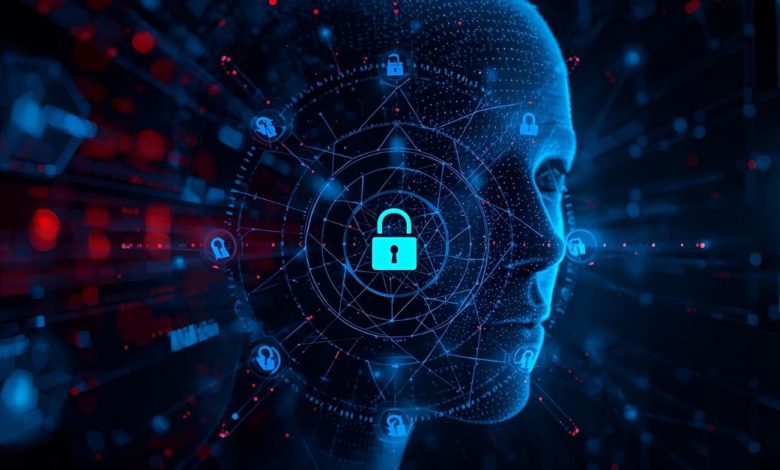
The emergence of agentic AI comes at a critical time. Cyber threats are increasing in both volume and sophistication, while enterprise IT environments are growing more complex. Security teams face a shortage of skilled analysts, making autonomous systems essential for augmenting human capabilities and ensuring timely, accurate threat response. By continuously analyzing data and learning from evolving threats, agentic AI can take autonomous actions such as isolating compromised endpoints, prioritizing critical alerts, and enforcing security policies across the network.
What is Agentic AI?
Agentic AI refers to advanced, autonomous AI systems capable of independently perceiving, planning, deciding, and acting with minimal human input. Unlike traditional AI, which often requires manual oversight and executes pre-programmed instructions, agentic AI operates proactively and continuously adapts to changing conditions. In essence, it behaves like an intelligent collaborator rather than a passive tool.
In cybersecurity, agentic AI’s potential lies in its ability to autonomously detect threats, prioritize vulnerabilities, and automate risk remediation. This approach stands in sharp contrast to today’s fragmented, manual workflows, which often leave security teams overburdened, slow to respond, and unable to fully leverage the massive volume of security data generated across modern enterprise environments. As cyber threats grow in volume and sophistication, organizations struggle to keep pace with manual monitoring. Agentic AI addresses this gap by continuously learning from evolving threats and dynamically adapting responses, accelerating decision-making, and reducing reliance on human intervention.
The Current State of Risk Remediation
The current state of risk remediation is marked by a range of persistent challenges, with three in particular underscoring the scale of the problem. First, investigation times remain unacceptably long, requiring significant analyst effort to resolve each identity-related alert and slowing response in high-pressure environments. Second, credential theft has surged dramatically, now driving roughly 20% of breaches, fueled by a 160% spike in compromised credentials in 2025 alone, an exposure that often lingers for months before remediation. Third, organizations are weighed down by tool sprawl, managing as many as 83 different security products from nearly 30 vendors, creating overlapping processes, visibility gaps, and fragmented risk management.
These challenges carry significant operational and financial consequences. Extended investigation times and delayed remediation increase breach likelihood, inflate incident response costs, and divert security teams from strategic initiatives. Tool sprawl complicates workflows, leaving analysts to manually correlate alerts across multiple platforms and increasing the risk of errors. Together, these factors underscore the urgent need for intelligent, automated solutions capable of accelerating remediation while reducing human error. Such solutions allow organizations to minimize operational strain, improve accuracy, and ensure resources are focused on high-value tasks rather than repetitive, low-level investigations.
Agentic AI for Smarter, Swifter, and Streamlined Remediation
Agentic AI is redefining risk remediation by enabling smarter, swifter, and more streamlined operations. Through autonomous threat detection and mitigation, AI agents can act in real time, isolating compromised systems or disabling access without waiting for human intervention. This evolution drives a fundamental productivity shift, freeing analysts from repetitive tier-1 and tier-2 tasks such as alert triage, early forensic work, log correlation, and anomaly detection. Thirty percent (30%) of professionals have already adopted this approach, while another 42% are evaluating its implementation. While fewer than 10% of generative AI pilots scale beyond experimentation, reimagining workflows around vertical, goal-driven AI agents unlocks far greater operational value and measurable bottom-line impact.
Beyond remediation, agentic AI enhances broader security strategies by enforcing multi-factor authentication (MFA) across critical systems. By ensuring that only authorized users can access sensitive data, MFA significantly reduces the risk of credential compromise, protects against phishing attacks and account takeovers, and strengthens organizational compliance posture. AI enforcement of MFA also allows organizations to implement these protections consistently without manual oversight.
AI-driven device management further improves security by continuously monitoring endpoints, automating patch deployment, and ensuring device configurations meet policy standards. This reduces vulnerabilities, limits the attack surface, and enhances operational consistency. Agentic AI can also prioritize patching based on risk, isolate devices exhibiting anomalous behavior, and maintain a dynamic inventory of all connected endpoints.
Additionally, agentic AI supports improved security hygiene by proactively identifying misconfigurations, outdated software, and risky user behaviors. Through continuous monitoring and automated remediation, organizations can address potential threats before they escalate into incidents. Security hygiene improvements include automated policy enforcement, proactive user behavior analytics, and simulated threat exercises to validate defenses.
Real-world deployments demonstrate this potential at scale. Agentic AI has been shown to save 360,000 hours of manual review annually while simultaneously reducing compliance risk, improving accuracy, and reinforcing a robust, proactive security posture. Organizations leveraging agentic AI gain both operational efficiency and enhanced security, positioning them to respond faster, more accurately, and with less human intervention than ever before.
Conclusion
Agentic AI is paving the way for a self-healing cybersecurity future by automating detection and remediation, slashing mean time to resolution, and relieving analyst burdens. It enables security teams to shift from reactive firefighting to strategic orchestration, fully leveraging AI as a collaborative force. With proven outcomes, including massive time savings, improved risk management, and growing adoption by industry leaders, Agentic AI is no longer just a theoretical innovation but a foundation for disaster resilience at scale. Positioned at the forefront of this transformation, we can drive mission-critical solutions that deliver autonomy, agility, and resilience, empowering security professionals to focus on innovation rather than incident triage.





